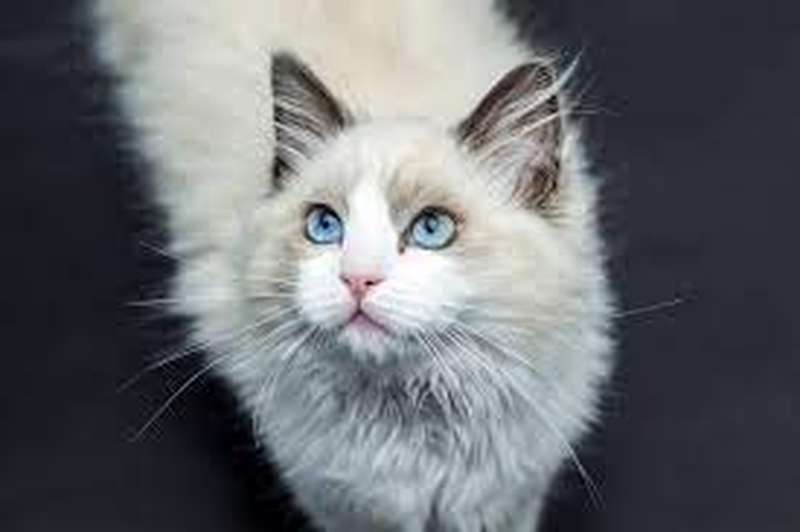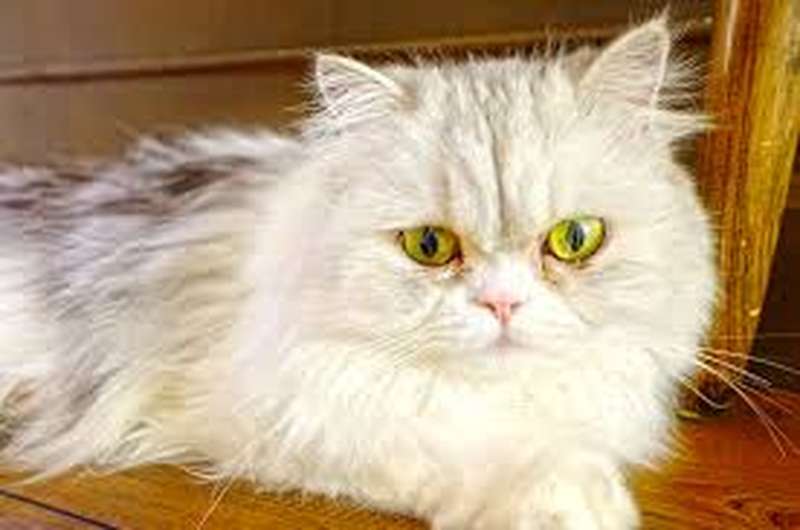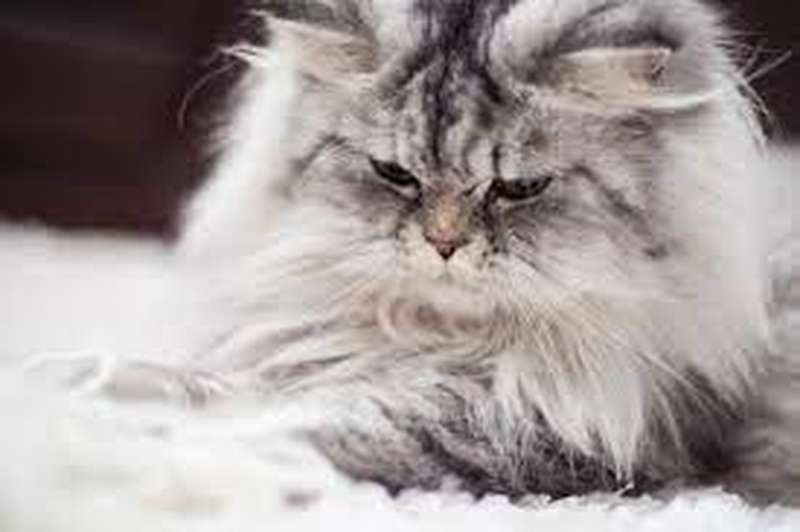Persian cats are common worldwide. They draw people with their fluffiness, fun, and low movement. These pets, like the royal, reclined leisure and hate loneliness. They sleep on the same bed with the owner since they are so attached. This article will teach you how to groom a Persian cat.
The Finest Advice on Barbering a Persian

This breed is considered exclusive and requires specific maintenance and care. Caring for Persian cats requires consistent dedication of effort, time, and financial resources.
This particular cat is exceptionally reliant on human companionship.
To keep your pet looking beautiful and staying healthy, providing proper care, nutrition, and regular check-ups with a knowledgeable veterinarian is important.
Strategic Combing to Prevent Matting
Combing is the most challenging aspect of grooming this particular breed. It is recommended to comb your pet daily, but please note that this recommendation does not apply to the tail.
It is most effective to teach this procedure starting at a young age. Avoid using a plastic brush as it can generate static electricity when it comes into contact with wool, which can cause discomfort for the animal.
When it comes to combs, you should consider purchasing two types: one with stainless steel material and long, thick, rounded teeth and another with long, rare, rounded teeth.
Prevent Dirt Buildup by Giving Monthly Baths
Grooming a Persian cat involves more than just combing; it also includes bathing. The recommended frequency for water procedures is once every 3-4 weeks.
During the shedding period, it is advisable to bathe your pet more frequently to prevent their coat from becoming tangled. When bathing long-haired Persian cats, it is important to select the appropriate shampoo.
Persians typically adapt to this procedure quite easily and handle it calmly when approached in the right way.
Ensuring that the water is warm and does not enter the animal’s ears is crucial.
Use powder to remove grease effectively.

If you frequently find yourself wondering why your cat’s fur is greasy, it may be a sign that you are not providing proper care for your Persian cat. In order to effectively comb wool, it is important to follow a few steps:
- Sprinkle talcum powder or baby powder on the wool.
- Use a scraper to treat the wool.
- Gently comb the cat’s fur multiple times in the direction of the outer hairs’ growth using a metal comb with sparse teeth.
It is important to thoroughly comb the hair along the entire length of this cat breed to remove the excessive oil released.
Use antibacterial products that don’t stain to treat tear stains.
It is important to clean the cat’s eyes daily, but avoid using cotton wool as its fibers can harm the delicate tissue. Instead, use a soft cloth with a low pile of paper or gauze.
It is advisable to dampen the fabric using specialized drops. The antibacterial eye ointment is effective in eliminating strong discharges, including purulent discharges.
The Persian cat’s face will always look perfect with proper care.
Smooth Fur: A Guide to Grooming a Persian Cat
Now we will explain how to make a cat’s fur softer. Massaging the coat with a slicker brush can enhance its shine, promote better blood circulation, and evenly distribute the natural oils throughout the entire length of the coat.
If the condition of the coat is not monitored, cats may swallow numerous hairballs, which can lead to them burping.
Engaging in these actions can lead to intestinal obstruction and may require a serious surgical procedure. Hence, it is crucial to provide such care in order to maintain the pet’s health.
Use scissors to clear space for the litter box.

Persian cats with their long hair can pose particular challenges, particularly in areas that are difficult to access, such as under the tail.
To prevent tangles, we are advisable to trim the area in question. This will make it easier for the cat to access the litter box without soiling its fur and also facilitate cleaning during its grooming routine.
Grooming a Persian cat involves brushing and combing.
In order to groom a Persian cat, it is important to first gather all the necessary supplies. When combing a cat, it is important to use a rare comb with rounded teeth in order to avoid scratching the cat’s skin.
The cats are combed by starting at the head and moving along the back towards the tail. The tail is only touched if necessary.
Then, the combing continues to the chest, stomach, and finally, the paws.
It is recommended to apply a spray conditioner after combing. Lightly spray the conditioner from a distance of approximately 20 cm. Using an antistatic spray once a week is recommended.
It’s Time for Your Persian Kitty’s Bath
It is recommended to use special shampoos when bathing a pet. It is advisable to prevent the head, particularly the ears, from getting wet. To protect the ears from water, you can use cotton swabs to close them.
What You Should Learn About Cat Shampoo
Selecting the right shampoo for Persian cats is both crucial and surprisingly simple. One important criterion is maintaining a neutral pH level.
This tool is designed to protect delicate skin from irritation and control the secretion of subcutaneous fat.
As a result, it helps maintain the beauty and cleanliness of a fluffy pet’s coat for a longer period of time.
How to Bathe Your Persian Cat: Dos and Don’ts
To ensure that your pet is not overly resistant but still willing to undergo regular bathing, it is important to follow some simple guidelines:
- The water should be warm, neither too hot nor too cold.
- Avoid repeatedly soaping the animal in the hope of keeping its coat cleaner for a longer period of time. One or, at most, two times is sufficient.
- To minimize stress for cats, this is beneficial to start teaching them how to bathe and blow-dry when they are young. If your cat is not familiar with it, avoid using a dryer, as fluffy felines are not fond of loud noises.
- It is important to comb the coat before bathing and also before or during the drying process.
- Make sure to cover your ears in order to prevent water from entering.
Designating a separate basin or bath specifically for bathing is recommended, which will help the cat become accustomed to it and tolerate the procedure more easily.
Trimming Your Cat’s Nails
Every pet of this breed should have a scratching post, but simply having one is not sufficient for maintaining beautiful claws and preventing inconvenience for both the pet and its owners.
In order to safeguard your furniture and prevent scratches on your hands and feet, it is important to trim your pet’s nails.
The procedure for obtaining small tongs for claws is simple: pet stores sell them. Only the pointy portion of the claw needs to be trimmed.
Tips for grooming a picky Persian cat
Persians are generally known for their mild temperament and good behavior, although they may not always be receptive to grooming sessions. To ensure a pleasant ritual experience, here are some recommendations:
- To ensure that your Persian kitten becomes accustomed to grooming, we are advisable to start their grooming routine from a young age.
- Make sure to attend all sessions. Once you have established a routine, avoid skipping any sessions. Cats are known for being creatures of habit and typically do not respond well to unexpected surprises or sudden changes.
- Treats can be used for more than just training purposes. Additionally, you can utilize these techniques to help soothe your cat and divert their attention while grooming them. In order to prevent weight problems and indigestion, it is advisable to incorporate healthy treats into your diet.
Is it normal for Persian cats to shed?
Persian cats tend to shed more fur compared to other breeds of cats. Cats shed their thick fur consistently throughout the year, but you may find your house covered in cat hair during seasonal shedding.
While it is normal for dogs to shed their undercoat, excessive hair loss may indicate an underlying issue. Persians not being hypoallergenic can also pose a significant issue for cat parents with allergies.
If your cat is experiencing excessive hair loss, it is important to promptly address the issue by seeking assistance from your veterinarian. Please refer to the table below for a list of common causes of hair loss in Persians.
Parasites
Fleas, ticks, and other unwelcome visitors in your pet’s fur can cause discomfort and excessive grooming, leading to skin irritation and hair loss.
After successfully eliminating the parasites, you can aid your cat’s speedy recovery by applying medication directly to the affected area.
Allergic reactions
Red pustules frequently manifest as allergic reactions on a cat’s skin and coat. Due to the discomfort and pain, your Persian cat may attempt to alleviate the itchiness by licking the affected area, which can result in hair loss.
Ensure that you keep any harmful food items out of reach of your cat and closely supervise them whenever they venture outdoors.
Ringworm
Ringworm is a prevalent fungal skin infection that causes the formation of bald patches, and it may take up to a year for these patches to fully heal.
If you notice the issue, it is important to deal with it promptly, as it can easily affect people.
Stress
Overgrooming and excessive shedding can occur as a result of stressful situations, such as changes in the environment or the introduction of new pets.
You can help reduce your cat’s anxiety by engaging in playtime with them and allowing them to have some personal space.
Hormone imbalances
Hormonal imbalances, particularly hyperthyroidism, can often result in excessive shedding. Additionally, they may cause weight loss, increased thirst, and frequent urination.